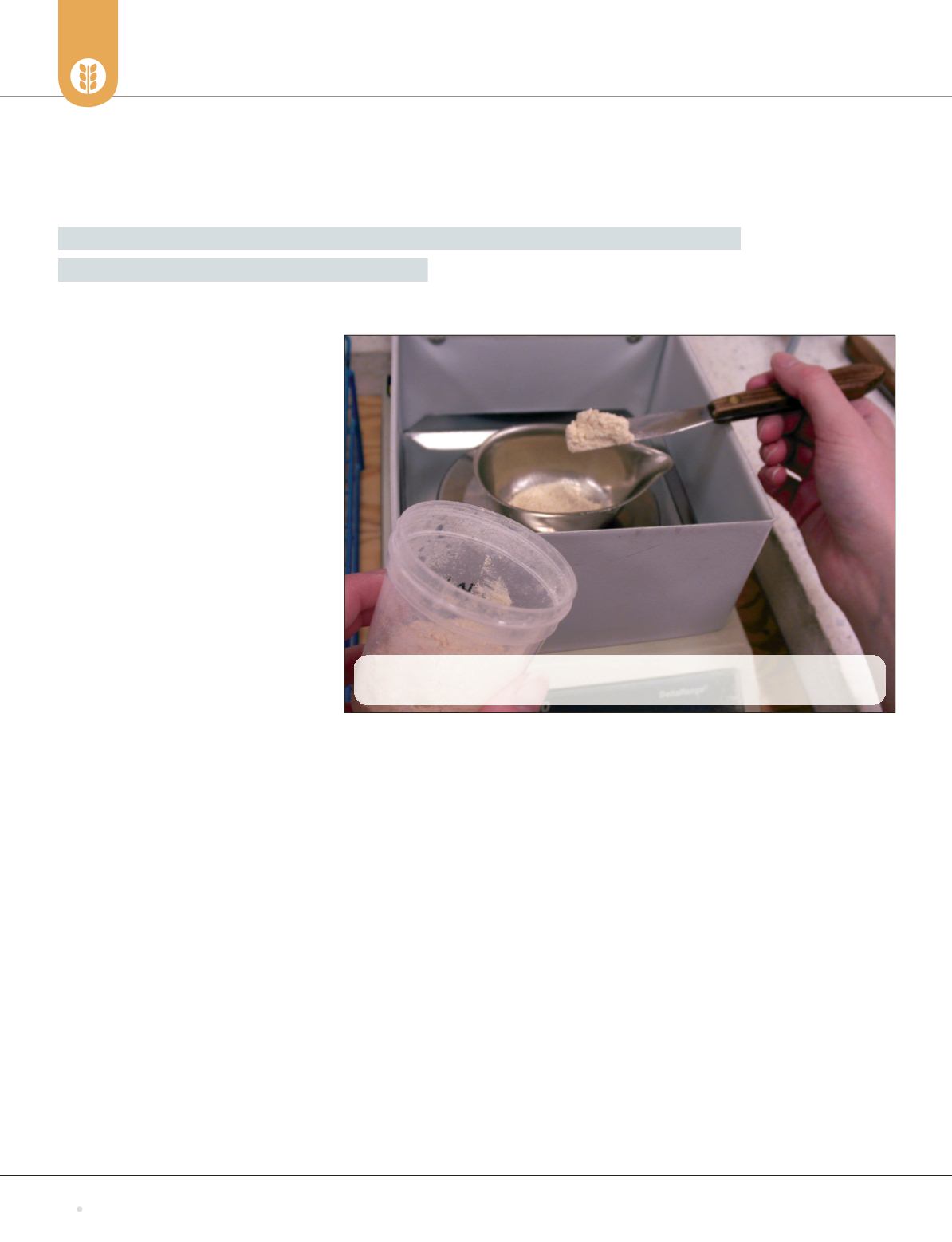

GRAIN
SCIENCE
NEWS
Above thegrade
FOR WESTERN CANADIAN GRAIN
producers, the 2016/17 growing season
saw environmental conditions that were
nearly perfect—perfect for a dramatic
increase in
Fusarium graminearum
in their
wheat crops, that is. As a result, the year
revealed several potential drawbacks to
Canada’s current wheat grading system.
Sarah Foster, president of 20/20 Seed
Labs in Nisku, said that beginning in Sep-
tember of last year, her lab began receiv-
ing calls from farmers to complain about
what they perceived as unfair downgrad-
ing and discounting of their grain due to
the current testing processes.
“We heard reports that inspectors were
seeing spores on the crease of the seed
and symptoms of Fusarium on the seed,”
she said. “But when the grain was actually
tested for deoxynivalenol (DON), the next
step of the quality assessment, the DON
had nowhere near the amount of infection
the grader was suggesting there was.”
While minimally toxic to animals in
small amounts, at higher levels DON can
result in reduced feed consumption or
feed refusal. When farmers bring their
grain in to sell at the elevator, DON levels
are estimated through a physical inspec-
tion for Fusarium, where kernels that
appear damaged are counted. In addition,
Falling Number (FN) testing is conducted,
also assessing the grain visually for sprout
damage that can a ect its bread-making
quality. Many farmers who have had
samples downgraded for sprouting have
received independent FN results that
indicate good milling quality.
Foster said there have been com-
plaints about these visual—and therefore
subjective—tests for a number of years,
and more accurate testing methods are
needed on site at the elevators to clear up
MOREOBJECTIVEGRAIN TESTINGANDGRADINGREQUIRED TOKEEP
these kinds of issues and ensure farmers
are paid fairly for the quality of grain they
produce.
“These are general quality standards
where the physical appearance of the grain
is spoiled, but it may not have an e ect on
the final product,” she said. “The Alberta
Wheat Commission (AWC) recently said
‘enough,’ and they are requesting a more
scientific way to establish the grade.”
Kevin Auch, AWC’s chair, strongly
agreed that modernization of Canada’s
current grading system is required to
better meet the demands of international
buyers.
A grain farmer himself, he understands
well the importance of meeting buyer
demands, particularly at the export level.
He estimates that approximately 80 per
cent of the wheat grown on his 5,000-
acre farm near Carmangay ends up in the
export market. Auch said this number was
typical of most Prairie operations, depend-
ing on the year.
“If grain buyers around the world are
buying the product based on certain crite-
ria, and farmers are not paid accordingly,
it makes us farmers less competitive in the
long run,” he said.
In November of last year, AWC called on
the Canadian Grain Commission (CGC)
to implement improved methods of testing
that would ensure farmers maintain their
international competitiveness and receive
fair market price for their grain.
Auch echoed Foster’s suggestion that
the ideal alternative would be to have a
scientifically accurate testing method
available when wheat is delivered to the
elevator that would indicate the actual
DON levels in a sample, and therefore the
fair price for the grain.
“We realize the potential for technolog-
ical constraints in regard to this issue, but
CANADIANGROWERS COMPETITIVE
SAMPLING THE SLURRY:
A ground wheat sample is measured before being mixed with water
to form a slurry for Falling Number testing.
Photos:CanadianGrainCommission
Spring
2017
Grains
West
42









